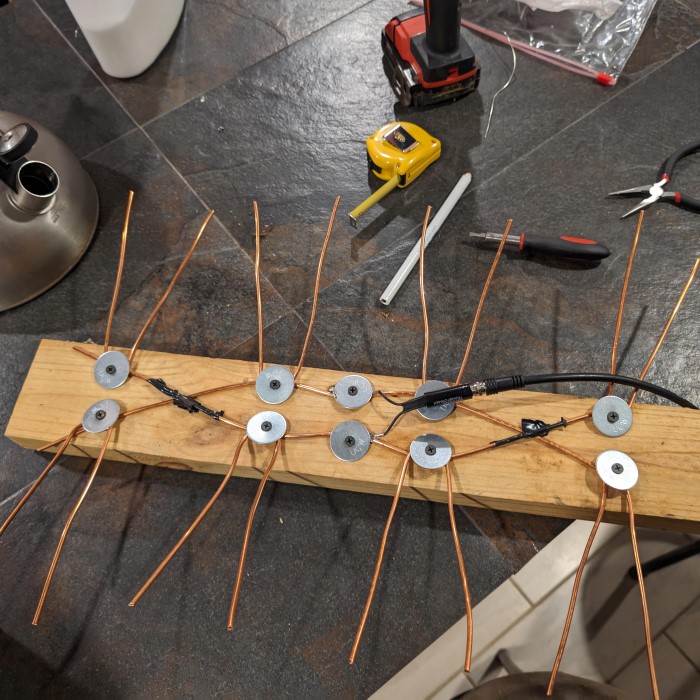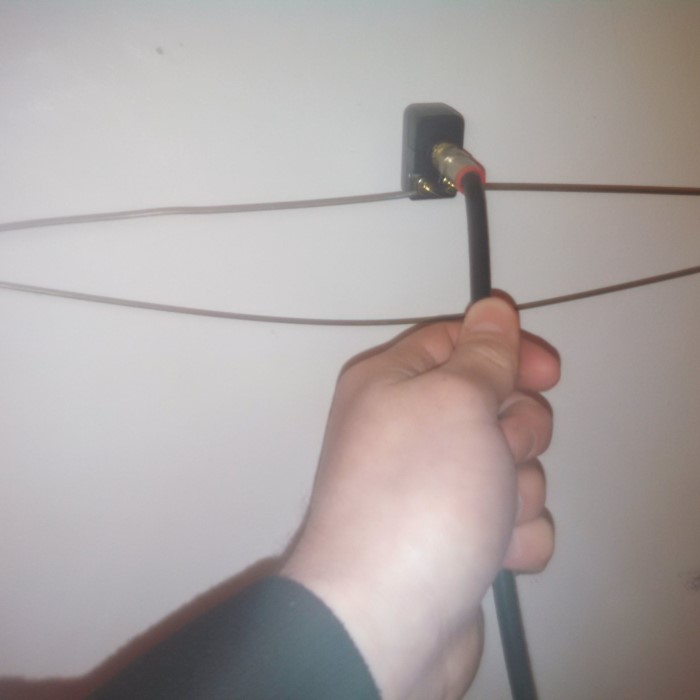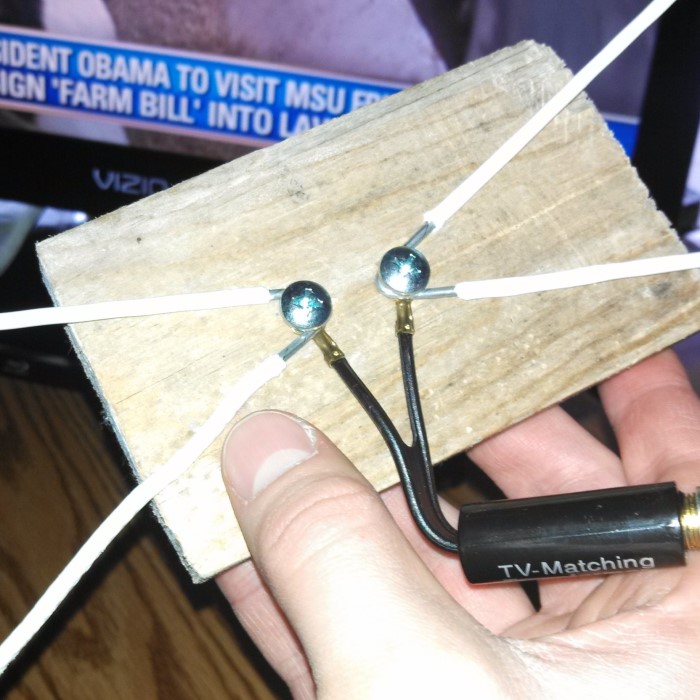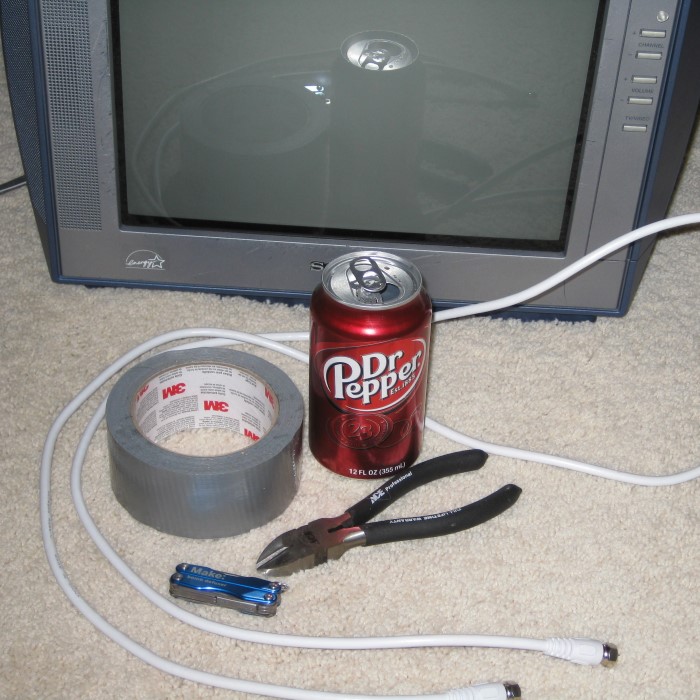Contents
- 1 Introduction to DIY TV Antennas
- 2 Materials Needed for a DIY TV Antenna
- 3 Step-by-Step Guide to Making a TV Antenna
- 4
- 5 Optimizing and Testing Your DIY Antenna
- 6
- 7 Tips for Enhancing TV Signal Strength
- 8 Comparing DIY vs. Store-Bought TV Antennas
- 9
- 10 Common Mistakes to Avoid When Making a TV Antenna
- 11 Conclusion
Introduction to DIY TV Antennas
Television has always been a principal source of entertainment and information. However, many people find themselves frustrated with poor reception and limited channel availability. If you’re looking for an effective solution, learning how to make a TV antenna can be a game-changer. In this guide, we will walk you through everything you need to know to create your own TV antenna, improve your viewing experience, and save money in the process.

Benefits of Making Your Own Antenna
DIY TV antennas are budget-friendly. They cost less than store-bought models. You can design one to meet your specific needs. This includes preferences for better reception or unique positioning. Building your antenna is a fun and educational project. It allows you to learn about electronics and signals. Plus, you’ll enjoy the satisfaction of creating something useful.
How TV Antennas Work
TV antennas are designed to pick up signals from broadcast towers. These signals are sent in electromagnetic waves. Antennas convert these waves into a form your TV understands. Indoor models are used inside homes, while outdoor antennas catch stronger signals. The placement of the antenna impacts your reception quality. Metal components inside the antenna play a key role in capturing signals.
Materials Needed for a DIY TV Antenna
Creating your own TV antenna requires a few basic materials. With the right tools, you can make an effective antenna that meets your needs.
Essential Tools and Supplies
To make a TV antenna, gather simple tools and materials:
- Wire or Metal Rods: These are the primary signal-receiving elements.
- Wood or Plastic Frame: This serves as the base structure of your antenna.
- Coaxial Cable: Connects the antenna to your TV.
- Screws and Fasteners: Needed to secure parts together.
- Drill and Screwdriver: Useful for construction and assembly.
- Measuring Tape: Ensures accurate dimensions for better signal reception.
- Electrician’s Tape: Helps to insulate and organize wires properly.
Alternative Materials for Cost Savings
For budget-friendly antenna projects, consider these alternative materials:
- Old Hanger or Coat Wire: Works well as cheap signal-receiving elements.
- PVC Pipes: Affordable material for the frame of your antenna.
- Recycled Coaxial Cable: Reuse old cable from outdated equipment.
- Kitchen Foil: Can enhance signal capture if used carefully.
- Scrap Wood: Perfect for creating a sturdy frame.
- Binder Clips and Paper Clips: Useful for quick fixes or adjustments.
Using these materials simplifies the process and reduces costs. Ensure components are durable and suitable for long-term use.
Step-by-Step Guide to Making a TV Antenna
Creating a DIY TV antenna is a straightforward process. Follow these steps for success.
Designing the Antenna Based on Your Needs
First, determine the channels you want to receive. Research local broadcast tower locations. This helps you decide on your antenna’s direction and design. Choose a suitable frequency range, such as UHF or VHF. Consider available space for placement in your home. A clear idea of your goals simplifies the process.
Constructing the Antenna Frame
Start by building a sturdy frame. Use materials like wood, plastic, or PVC pipes. Measure and cut the frame according to your design. Secure the pieces together with screws or glue for stability. The frame holds the signal-receiving elements in place. Ensure the structure is lightweight but durable. A well-constructed frame improves the antenna’s efficiency.
Attaching the Signal-Receiving Elements
Attach the metal rods or wires to the frame. Arrange them based on your design and local signal needs. Ensure proper spacing between elements for optimal performance. Connect the rods to the coaxial cable using screws or clips. Secure all connections firmly to avoid loose parts. Insulate exposed wires with electrician’s tape for safety. Double-check that everything is tightly placed and aligned.
By following these steps, you can build an effective TV antenna. Take your time to ensure accuracy and quality.
Optimizing and Testing Your DIY Antenna
Optimizing your DIY TV antenna is key to accessing clear and strong signals. Testing ensures your antenna works effectively. Follow these practical steps to boost performance.
Positioning the Antenna for Best Reception
Proper positioning is essential for strong reception. Here are tips to find the ideal placement:
- Locate Nearby Broadcast Towers: Use online tools or websites to identify the location of broadcast towers. Point your antenna towards these towers.
- Choose a High Placement: Higher spots, like rooftops or attic spaces, often offer better signal access.
- Avoid Signal Blockages: Keep the antenna away from walls, metal objects, and large furniture that may interfere.
- Test Multiple Positions: Move the antenna around and check signal strength using your TV’s signal meter.
- Angle Adjustment Matters: Slight adjustments to the antenna’s angle can improve clarity. Experiment with positions.
Troubleshooting Common Reception Issues
Reception problems can arise from several factors. Try these solutions:
- Check All Connections: Ensure the coaxial cable is firmly connected to the antenna and TV.
- Inspect the Antenna: Look for damaged or loose parts. Repair or replace as needed.
- Reduce Interference: Electronics like Wi-Fi routers and microwaves can cause interference. Place your antenna away from such devices.
- Re-scan Channels: Perform a channel scan on your TV after repositioning the antenna. This finds available channels based on the current setup.
- Upgrade Signal-Receiving Elements: Replace the wires or rods with better quality materials if the signal remains weak.
- Use a Signal Amplifier: Amplifiers can boost weak signals effectively, especially in remote areas.
By optimizing and testing your DIY antenna’s placement and performance, you’ll enjoy improved signal quality. Take time to troubleshoot issues for the best results.
Tips for Enhancing TV Signal Strength
How to make a tv antenna? Improving TV signal strength ensures better clarity and fewer interruptions. Implementing simple techniques can make a notable difference.
Avoiding Interference Sources
Interference can weaken signal quality significantly. Follow these tips to reduce unwanted disruptions:
- Keep Antenna Away from Electronics: Place the antenna far from Wi-Fi routers, microwaves, and cordless phones.
- Avoid Metal Obstacles: Metal surfaces or structures close to the antenna can disrupt signal reception.
- Distance from Large Furniture: Ensure the antenna is far away from bulky items like cabinets or sofas.
- Minimize Power Line Noise: Nearby power lines emit signals that may interfere with the TV antenna. Keep a safe distance.
- Turn Off Unused Devices: Electronics not in use can still create interference. Turning them off helps.
By addressing common sources of interference, you can achieve stronger and clearer signals.
Using Signal Boosters and Amplifiers
Signal boosters or amplifiers can enhance weak signals, particularly in challenging locations. Consider the following:
- Install a Signal Amplifier: Amplifiers increase the strength of weak signals, especially useful for distant broadcast towers.
- Choose Quality Booster Equipment: Select high-quality amplifiers for long-lasting performance and reliable signal enhancement.
- Test the Amplifier’s Placement: Position the amplifier where signal reception is weakest for optimal results.
- Combine with Proper Antenna Setup: Pairing an amplifier with a well-positioned antenna maximizes signal strength.
- Ensure Secure Connections: Connect the amplifier securely to the antenna and TV for uninterrupted signal flow.
Signal boosters and amplifiers are effective tools for improving reception quality, especially in remote areas.
By avoiding interference and using amplifiers, you can optimize your DIY TV antenna for the best performance.
Comparing DIY vs. Store-Bought TV Antennas
How to make a tv antenna? Creating a DIY TV antenna offers flexibility and a personalized experience. However, store-bought options provide convenience and tested designs. Understanding their differences helps make an informed decision.
Cost Differences
- DIY Antennas Are Budget Friendly: Building an antenna is often less expensive. You can use recycled materials, such as wires or pipes, cutting extra costs. DIY projects also minimize spending on brand premiums.
- Store-Bought Antennas Have Fixed Costs: Commercial antennas usually range from $20 to $100 or more. The price varies based on the brand, features, and signal range.
- Hidden Costs in Store-Bought Designs: Store models may require additional purchases, like mounting accessories or amplifiers. These increase cost over time.
- Long-Term Savings with DIY: DIY antennas can be repaired using low-cost materials, while store-bought models commonly need replacement.
Performance and Durability Considerations
- DIY Antennas Offer Customization: Homemade antennas can be designed to suit specific signal needs or adjust easily. You can optimize the design to prioritize nearby signals or remote towers.
- Store-Bought Antennas Have Standardized Designs: These antennas are pre-tested for performance, but lack customization. High-end models may work well without adjustments.
- Durability Differences: DIY antennas depend on materials used. High-quality homemade designs last long; cheap materials may break quickly. Store-bought variants usually feature durable construction but lose performance with wear.
- Complexity in DIY Maintenance: DIY antennas require hands-on repair and proper alignment over time. Store-bought models, on the other hand, typically feature warranties for hassle-free support.
Balancing cost savings and performance priorities will guide your antenna choice. DIY options are excellent for creative solutions and learning, while store-bought models ensure simplicity and reliability.
Common Mistakes to Avoid When Making a TV Antenna
Building a DIY TV antenna can be simple, but small errors can reduce its efficiency. Avoid these common mistakes to ensure better performance.
Using Improper Materials
The materials you use significantly impact the antenna’s quality. Here’s what to keep in mind:
Avoid Weak or Thin Wires
When constructing your TV antenna, it’s crucial to use strong, durable materials for the wire elements. Opt for thicker copper wires, as they offer excellent conductivity and are resistant to corrosion. Another practical option is to repurpose metal coat hangers, which are readily available and can provide sufficient sturdiness. Weak or thin wires may not effectively capture signals, leading to poor reception quality. Therefore, investing in quality wire materials will ensure that your antenna performs optimally for a longer period.
Don’t Use Fragile Frames
The frame of your antenna plays a vital role in maintaining its structure and efficacy. Avoid using fragile materials such as lightweight plastics or flimsy wood, as these can easily break or become deformed with minimal pressure. Instead, opt for robust materials like sturdy wooden boards or durable PVC pipes. These materials will provide the necessary support and resilience to withstand wear and tear, especially if the antenna is exposed to outdoor elements. A strong frame will help ensure that your antenna remains stable and functional over time.
Incorrect Coaxial Cable
The coaxial cable is a critical component of your TV antenna setup, responsible for transmitting signals from the antenna to your television. Using low-quality or inferior coaxial cables can severely degrade the signal quality and lead to interruptions in your viewing experience. Always opt for high-quality coaxial cables that are specifically designed for television signal transmission. These cables generally feature better shielding, which protects signals from interference, and have superior connectors that ensure a solid connection. Investing in the right coaxial cable will greatly enhance the overall performance of your DIY antenna.
Skipping Insulation
Proper insulation of your antenna’s wires is essential for ensuring safety and preventing electrical issues. Neglecting to secure connections with appropriate insulation can result in short circuits, which may damage not only the antenna but also your television. Utilize durable electrician’s tape or heat-shrink tubing to wrap around exposed wire connections. This added layer of protection not only keeps the wires safe from moisture and physical wear but also minimizes the risk of electrical shorts, ensuring that your antenna operates safely and effectively.
Overusing Reflective Materials
While it may be tempting to use materials like kitchen aluminum foil to enhance the signal reception of your TV antenna, it’s important to exercise caution. Overusing reflective materials can disrupt the antenna’s overall design and lead to signal overload, ultimately resulting in poor reception quality. Instead of piling on layers of foil, consider using it sparingly and strategically to supplement your design, if necessary. Ensure that the overall configuration remains balanced, allowing for optimal signal capture without overwhelming the antenna’s structure.
Poor Connections
Connection integrity is paramount for the effective functioning of your TV antenna. Loose or poorly fastened screws and connectors can create gaps that disrupt the flow of signals, leading to inconsistent reception and picture quality. Take the time to carefully tighten all screws and ensure that connections are snug and secure. Regularly inspect these points for wear, as environmental factors can loosen connections over time. By maintaining solid connections, you’ll help ensure that your antenna consistently delivers high-quality signal reception.
Choose the right materials to improve your antenna’s performance and durability.
Incorrect Placement or Alignment
Proper placement is crucial for clear and consistent signal reception. Follow these recommendations:
- Poor Positioning: Place the antenna high, like near a window, rooftop, or attic space.
- Ignoring Angle Adjustments: Slight alignment changes can greatly enhance signal strength.
- Blocking Reception: Keep the antenna clear of walls, metals, or large furniture.
- Overlooking Tower Directions: Use online tools to locate nearby broadcast towers and aim the antenna accurately.
- Failing to Re-scan Channels: Always re-scan for channels after adjusting or relocating the antenna.
Position and align your antenna carefully for the best results. Even small changes can make a big difference.
By avoiding improper materials and placement errors, your DIY TV antenna will efficiently capture signals. Stay accurate and attentive throughout the process.
Conclusion
Advantages of Building Your Own TV Antenna
How to make a tv antenna? Making a DIY TV antenna saves money and reduces waste. You can use recycled materials for construction. Building your own antenna offers custom designs for better reception. This flexibility ensures an antenna tailored to individual needs. It promotes hands-on learning, enhancing your understanding of signals and electronics. DIY antennas are repairable, reducing long-term costs compared to store-bought options. Creating your own antenna can be satisfying and rewarding.
Encouragement to Experiment
Experimenting with DIY antennas fosters creativity and problem-solving skills. It’s a chance to try new designs and setups. Adjust antenna elements to improve signal reception. Explore various materials to find the most effective combinations. Test different placements to maximize performance. Each experiment enhances your knowledge and antenna quality. Embrace trial and error to learn and succeed. Start building today and enjoy better TV viewing on your terms.





